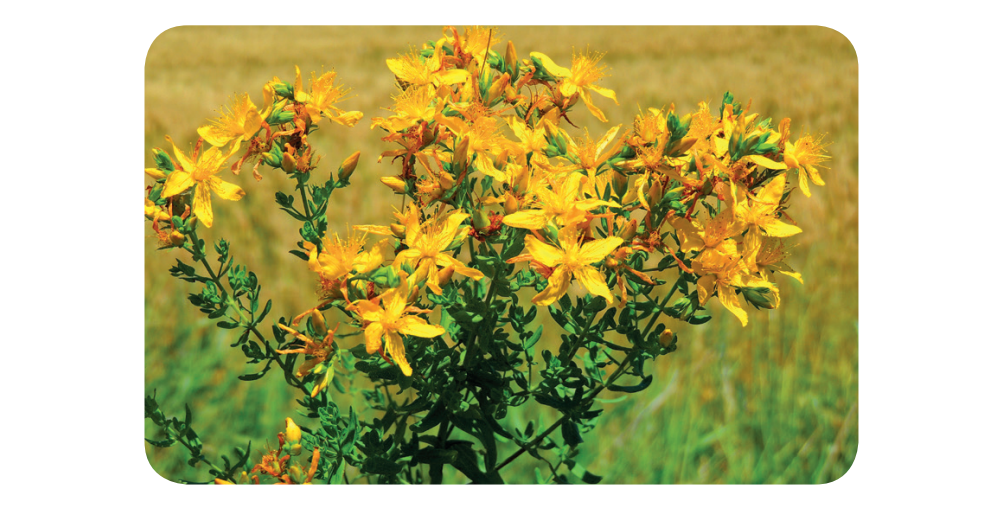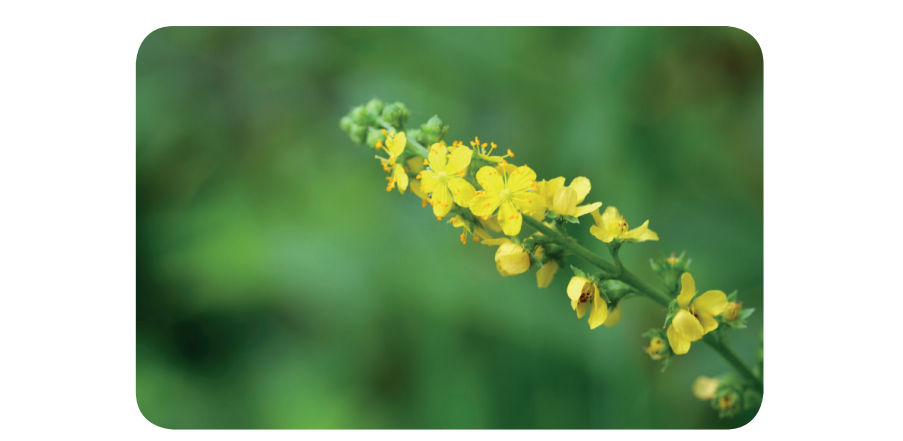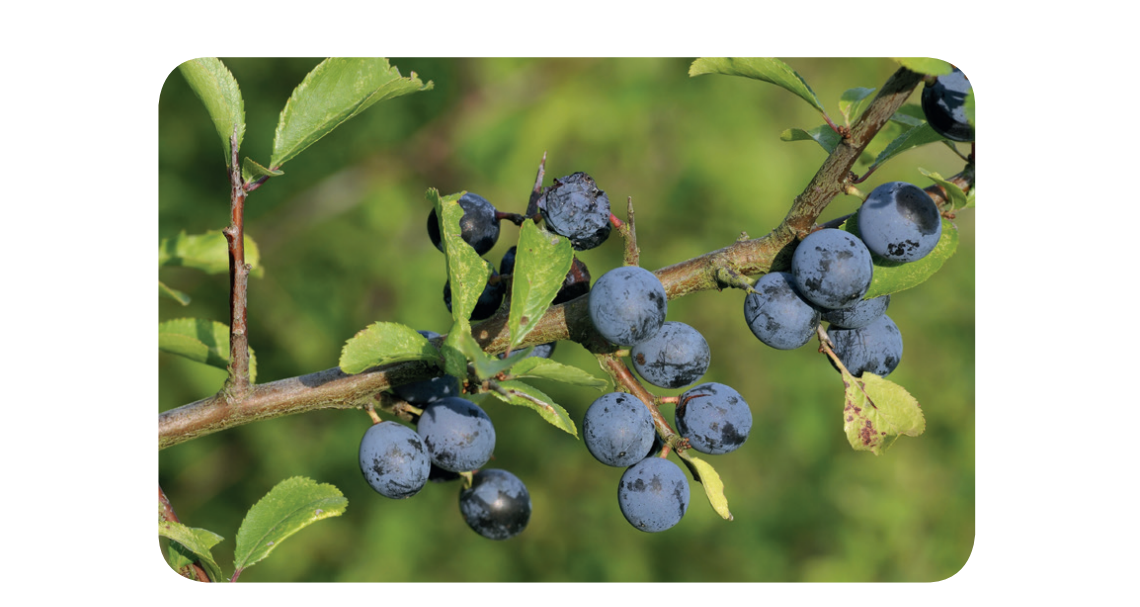



The common species of our meadows are yellow-flowering perforate St John‘s-wort (Hypericum perforatum) or imperforate St John‘s-wort (Hypericum maculatum) of the family Hypericaceae. Flowering stem is collected containing glycosides (hyperoside whose aglycon is red), essential oils, and tannins. St. John‘s Wort has a calming effect and a euphoric effect, so it is used to treat gallbladder diseases, neurosis and menstrual pain. Photodynamic effect is decribed in the plant which can cause oversensitivity to the Sun and possible skin irritation.

Pic 118: Imperforate St John‘s-wort (Hypericum maculatum)
On dry sunny balks with igneous soil, but also in the gardens, we find common agrimony (Agrimonia eupatoria) of the Rosaceae family. Its flowering stem is collected, which contains tannins. The infusion that we prepare by pouring hot water over the dried stem contains mainly tannins and essential oils and it is used externally for its healing effects in the form of a lotion for minor sores and ulcers and internally to calm upset stomach, increase production of bile formation (cholagogum), treatment of inflammation of the oral cavity.

Pic 119: Common agrimony (Agrimonia eupatoria)
In meadows, but also in the lawns in towns or gardens, ribwort plantain (Plantago lanceolata) of the Plantaginaceae family, grows. We collect its leaves. We can prepare syrup from them, which is used for inflammation of the upper respiratory tract, very easily. We can prepare the syrup either from the leaves only or we can add onions. In 1 Litre preserving glass jar, we always put a layer of ribwort plantain leaves, sweeten them with sugar, then we add a layer of cut onion wheels, sweeten them with sugar as well and continue like this until we fill the whole bottle. We can start using the ribwort plantain-onion syrup within two to three hours (you can try it at school and prepare the syrup with children). Another common meadow herb is white dead nettle (Lamium album) of the Lamiaceae family. Its white crowns are collected, that contain glycosides, slime, essential oils and tannins. It improves airway clearance during coughing and calms digestive discomfort.
The balks are often covered with bushes, often consisting of blackthorn, roses or elder. Elder (Sambucus niger) of the Adoxaceae family contains flavonoids, essential oils, tannins and organic acids. Their white inflorescences are collected, which are used to reduce fever and have slightly laxative effects. Black drupes contain glycoside routines, dye anthokyan, vitamin C and pectin. They are used in metabolic tea mixtures supporting digestion; fresh juice is effective for migraine and neuralgia and for an impaired vision, it strengthens the immune system and is effective for colds and flu. Along with the elder, roses (Rosa sp.) of the Rosaceae family often colonize balks. Ripe dried aggregate fruits of achenes of various types of roses are used for their large content of vitamin C (up to 1%), carbohydrates, tannins, slime, organic acids and carotenoids. They have astringent effect and are a source of vitamin C.
In spring, white flowers of blackthorn shrubs (Prunus spinosa) also of the Rosaceae family bloom on balks. In the autumn they have dark, frosty drupes.

Pic 120: Blakthorn (Prunus spinosa)
Thyme (Thymus) of the Lamiaceae family grows on dry balks. It contains tannins, bitter substances and essential oils, and is applied to improve airway clearance during coughing; it is used as a disinfectant, or for its antispasmodic effects.